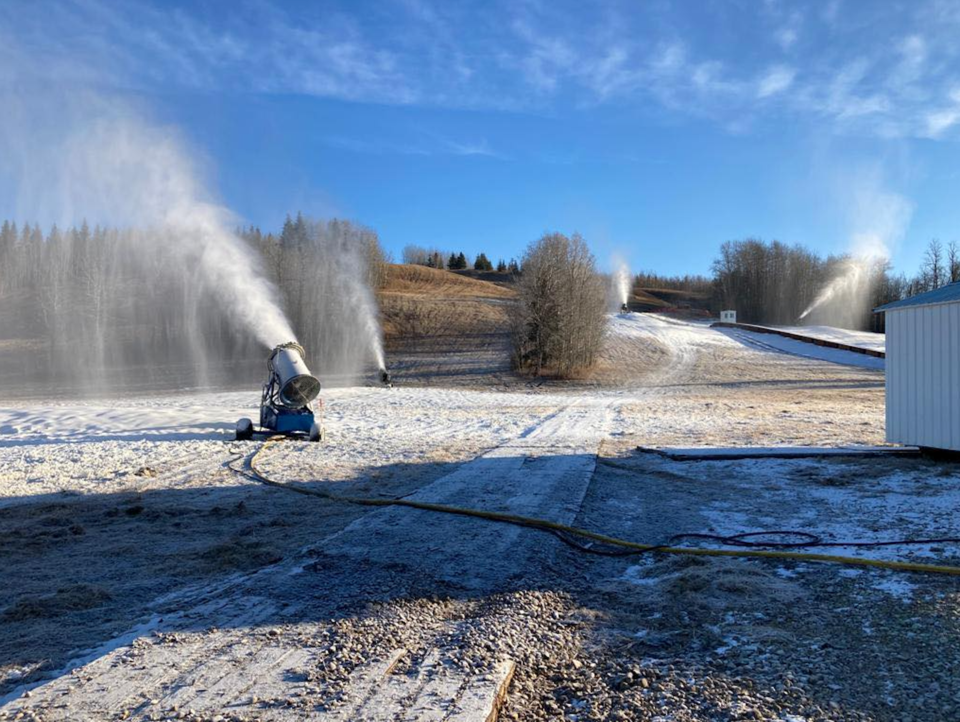WESTLOCK — It's not a guaranteed brown Christmas - yet.
Much of Alberta has been experiencing milder temperatures and a lack of precipitation this fall, including a large portion of the Westlock region.
While the City of Edmonton has experienced its driest November in a century according to Environment and Climate Change Canada (ECC), parts of northern Alberta also appear to have been drier and warmer than usual, with little rain or snow in the past several weeks.
Although no long-range data is available for the Town of Westlock, weather stations in parts of Westlock County, including the Pibroch and Tawatinaw areas, to the north and northeast of town, have indicated similar conditions for the month of November with each area receiving 1.9 millimetres and 2.1 millimetres of precipitation respectively, as noted by Justin Shelley, a metereologist with ECC.
“It’s certainly dry by any standard,” said Shelley. “Those similar areas of north central Alberta, usually receive about 18 millimetres of precipitation, about 17 to 18 centimetres of snow on average (same amounts as the Edmonton region).”
In comparison, precipitation amounts in the Tawatinaw area for November in past years have shown more rain or snow. For example, Tawatinaw received six millimetres of precipitation last November, with 13.6 millimeters in November 2021, and 23.5 milimetres in 2020. November 2019 had 32.3 milimetres and November 2018 had 15 millimetres of precipitation.
“The numbers are certainly closer to those average (amounts) and some of those years had above average precipitation, for November,” said Shelley, noting a rainy summer period which helped with drought issues in some areas, but “right now we’re experiencing a pretty dry fall and if that leads into a dry winter as well and possibly into the spring, those drought concerns may resurface through Central Alberta too.”
The warmer, drier conditions and lack of precipitation isn’t worrying too many local groups and organizations, who say they aren’t seeing any impacts from the lack of snow, at least not yet.
Shawna Vollema, facility supervisor at the Tawatinaw Valley Ski Hill, said they are still expected to open for the season in mid-December, with Dec. 16 as their projected opening day.
The ski hill is able to use its snow guns to cover the main downhill portion of the ski hill, though their cross-country-skiing trails remain bare.
“We’ll have some cross-country skiing once we get some snow,” she said, noting they do not make snow for the cross country trail but do for downhill skiing every winter.
"We make snow every year whether we have natural snow or not.”
In terms of event cancellations, Vollema did say that Nordic Alberta had an event planned for the Dec. 2-3 weekend at Pine Valley but postponed it to early January due to the lack of snow.
In addition, the Alberta Winter Games was to hold a qualifying event at the Tawatinaw Valley Ski Hill scheduled for Dec. 16, but Vollema said they have not heard from officials regarding the status of the event.
“They haven’t confirmed that it’s cancelled,” she said. “I have not heard anything regarding that.”
The Pembina Drift Busters snowmobile club, who have a system of trails approximately 150 kilometres in length north of Long Island Lake in Westlock County, would normally be out snowmobiling in December, as they wait until the end of hunting season (Dec. 1) to ensure safety on the trails, noted club president Dale Davis.
“We're actually going out this weekend (Dec. 2-3) to clean up our trails with our quads and side-by-sides due to the lack of snow,” said Davis, noting the lack of snow has not impacted plans for special events in 2024 so far.
Typically, the club holds off until special events until the new year, as there often isn't enough snow until mid-January.
However, whether or not things change and the area does receive more precipitation remains to be seen, as a global El Nino pattern appears to be behind the lack of precipitation and milder temperatures across the province.
“Right now we are in what’s called an El Nino season, which is based upon temperature and wind anomalies in the Pacific Ocean and ... has typical climatological impacts across the world,” said Shelley. “For western Canada when we’re experiencing these El Nino years, we typically see warmer than normal and drier than normal conditions … these trends we’re talking about too usually impact the majority of the prairies as well as other parts of Western Canada.”
Shelley said the warmer and drier period of weather is expected to continue throughout December and into the early part of the New Year, with the El Nino pattern forecast to stick around until the spring.
“It is likely we’re going to see warmer and drier conditions persist through the winter, but that’s not to say we won’t see any snowfall whatsoever, or to say we’ll be guaranteed to have a brown Christmas without any snow on the ground,” explained Shelley. “It’s too early to say that with any certainty but the trends are there for warmer, drier conditions to persist.”


